Buying Winter Tires. The difference between studless tires and TPMS.
Published on: 2021.01.28
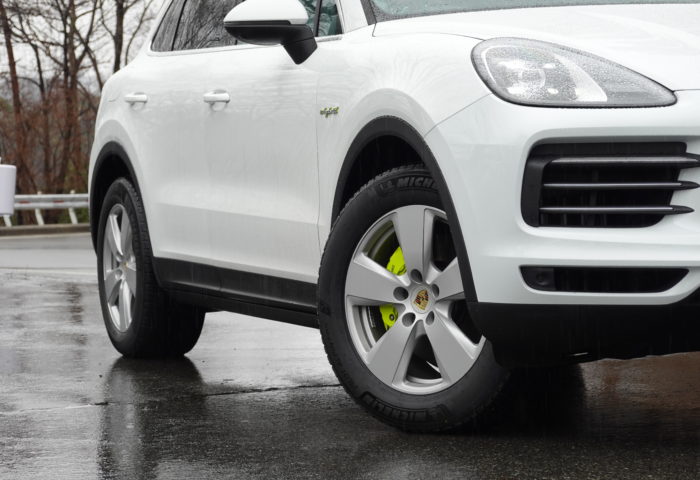
Winter tires and studless tires are completely different
The other day.Cayenne tires were replaced with winter tires.Until this time, I had not been able to find a "Winter tires and studless tires are the same thing, just called differently by different people.I thought it was a "one size fits all" tire, but this was the first time I learned that it was a completely different type of tire.
Studless tires are available in the "The temperature rises during the day and the snow melts, and at night the temperature drops again and the melted snow freezes, making the road surface smooth.The tire is suitable for winter road conditions in Japan.
It has very good control performance on ice so that it can run, stop, and turn on ice without any problems. HoweverStrong against snow and ice, but weak against dry and wet normal road surfaces.

Winter tires, on the other hand, are mainly used in Europe, such asWinter tires worn in areas that are not often iced overIt is. While not strong on ice, it performs similarly to a studless tire in snow, and similarly to a summer tire in dry and wet conditions.(in Japanese history)It was mentioned on the Michelin website.)
In Germany, they are required to change to winter tires when the temperature drops below 7 degrees Celsius. Summer tires are more rigid and resilient at higher temperatures.Rubber becomes hard and grippy when running at low temperatures in winterThe reason for this is that it is dangerous because of the
Certainly, in Germany, where people drive at 200km/h on the autobahn on a cold winter day, it would be dangerous if they did not have winter tires on.
In fact, according to tests by leading tire manufacturer ContinentalBraking from 60 km/h at temperatures below 7 degrees Celsius, the braking distance is 3 m longer with summer tires.The data also shows that Also, according to Porsche's official websiteWinter tires stop 12% shorter than winter tires on a wet surface at 3 degrees Celsius when braking from 80Km/h.It seems.
In Japan, there is no rule about changing tires according to temperature, and this is something that is generally little known, but I thought that owners of high-performance cars like Porsche should be aware of it.
Why Buy Winter Tires?
My husband bought winter tires instead of studded tires, and I asked him why.
I want to go skiing on snowy roads with my Cayenne.I'm going to teach my daughters to ski soon. I want to teach my daughters to ski soon.
That's what I was thinking when I was looking into tires.To begin with, I personally am very dissatisfied with domestic studless tires.No, it's not.
I don't know about Hokkaido or Tohoku, where icy slopes and mirror burns are a common occurrence, but the area around my house doesn't freeze that much even in winter. At most, we go to a nearby ski resort a few times a year or so. MoreoverThere is seldom such a hard icy slope.
And yet, the feeling of those squishy tires on domestic Speed Range Q-rated studless tires and theRoad noise, poor straight line stability, poor wet gripI can't stand wearing them all winter long. I think it would ruin the performance of the car.(My brother has Michelin X-ICE on his car, which seems pretty good)
So.We dared to choose winter tires instead of studless tires.We all know that ice-burn performance is lower than that of studless tires.
It is also good for the environment in Kansai, where rain and sleet are far more common than snow, and it has excellent dry grip performance at low temperatures and, above all, high-speed stability, because it does not spoil the performance of the Porsche at all.
By the way.The 991.1 Carrera 4S we rented on our honeymoon in Germany had winter tires.I'm not a fan of that.
I could drive on the autobahn at over 200km/h and still be fine, even around Neuschwanstein Castle where there was a sprinkling of snow, right?
He said.
Indeed, it was quite cold when we went to Germany on our honeymoon in October, and I was unable to see Neuschwanstein Castle because of the thick fog.
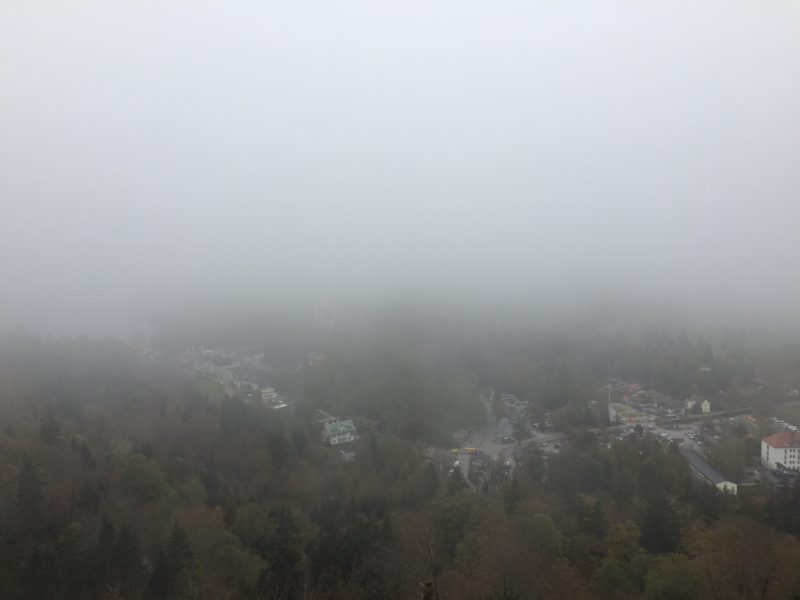
Photos from that time. The fog was so thick...
It was snowing, and it was cloudy and raining in Munich, but I didn't feel scared riding in the passenger seat.
I mean, I wasn't interested in cars at the time, so I was mostly sleeping on the bomb...(What a waste)
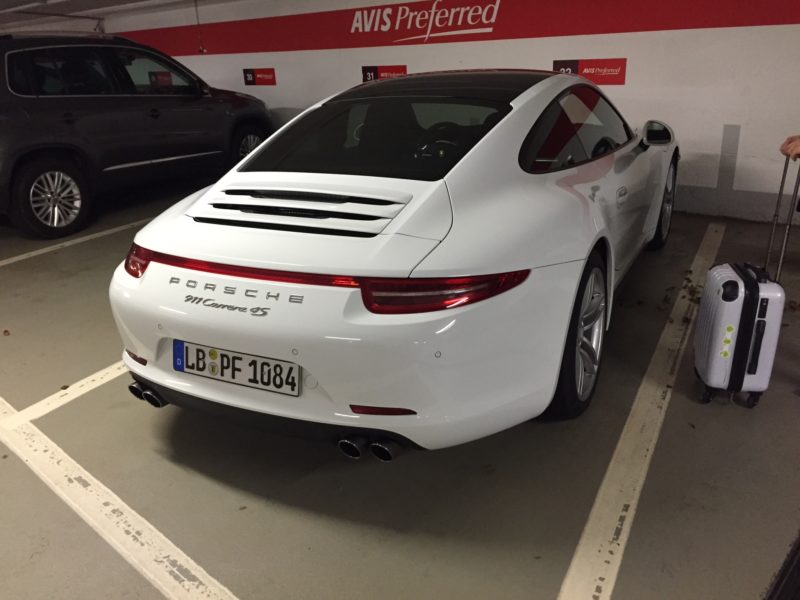
Incidentally, our Cayenne has 20" Cayenne design wheels.Purchased almost new 19" Cayenne wheels for winter tires from Yahoo!The tires are Porsche-approved. And the tires are Porsche-approved "Michelin Pilot Alpen 5 SUV N0".
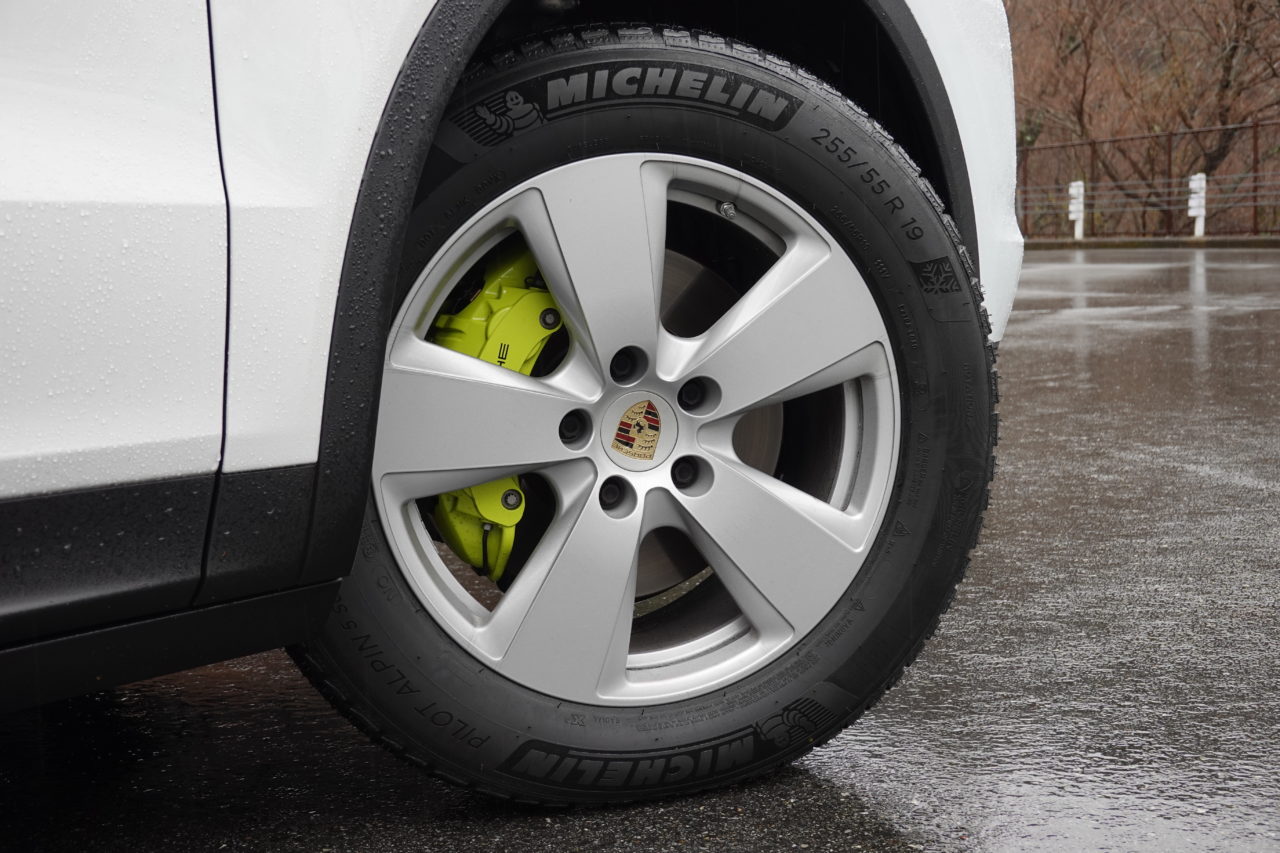
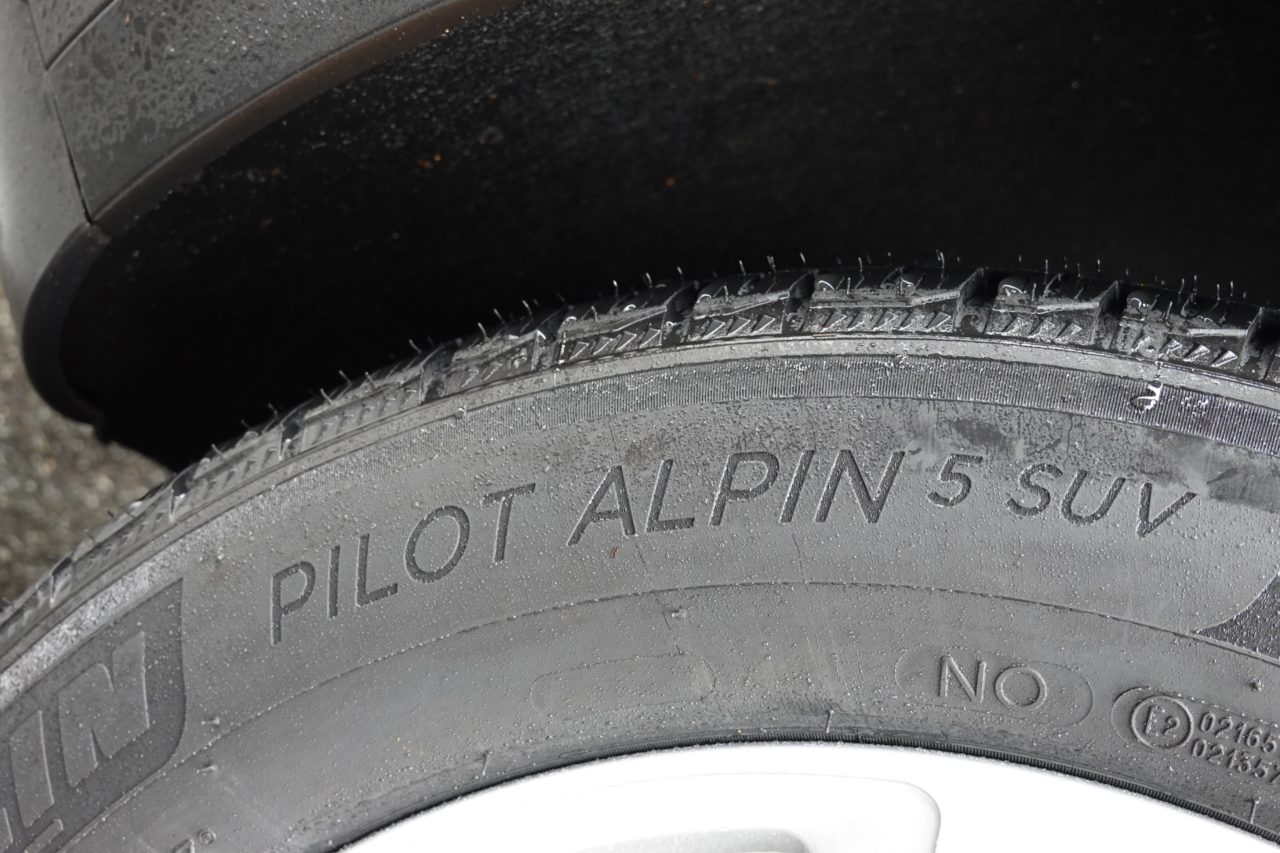
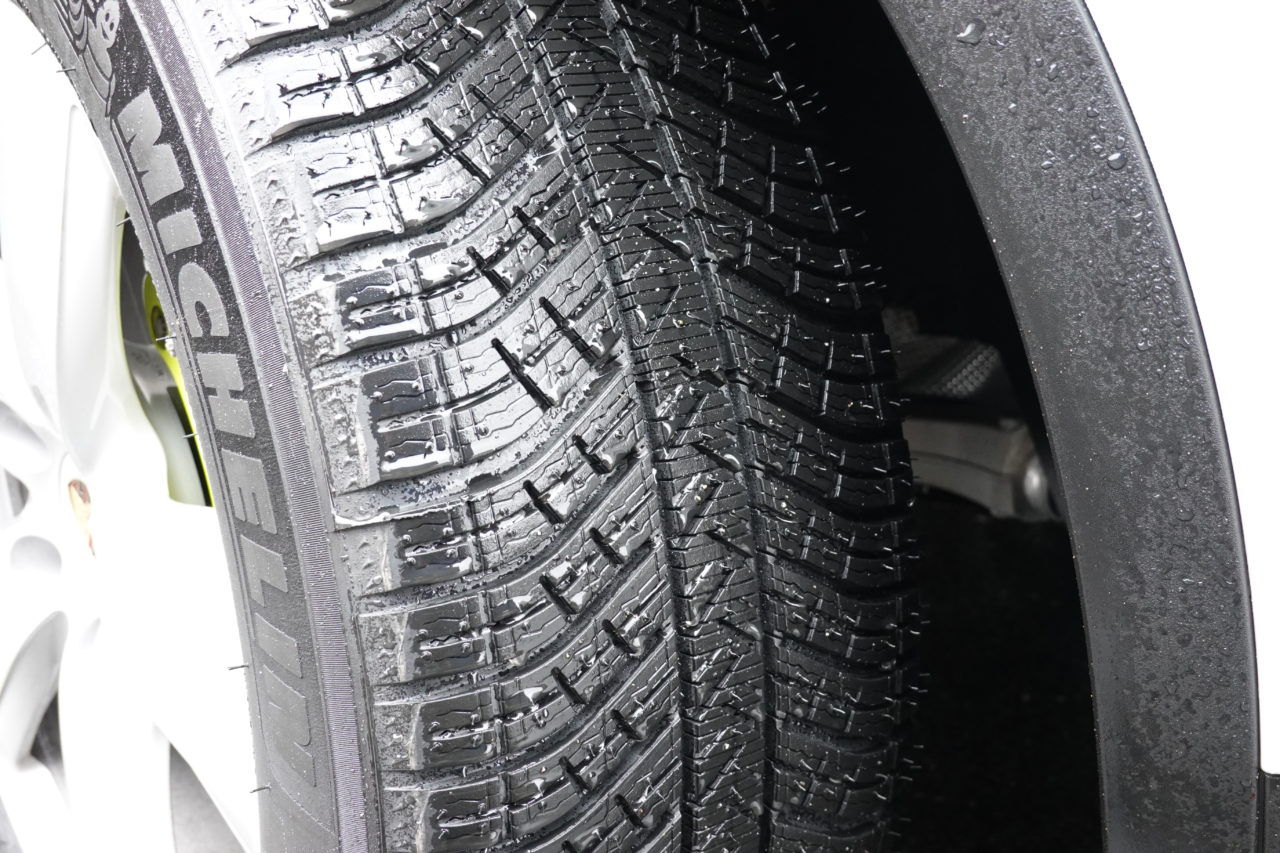
According to my husband, it was quite difficult to find these Porsche-approved winter tires, and no matter where he inquired, they were out of stock, and after searching and searching, he finally found "theI have one set.He found a store called "The Bamboo Shop" and got it.
Price.Used wheels are about 150,000 yen and tires are about 150,000 yen, totaling about 300,000 yen.So they say. And the usualNishinomiya Base(The work is meticulous. The attention to wheel balance is god). (who is very careful about the work, and his attention to wheel balance is divine).
| Next page→The air pressure sensor for this tire is an external one, how is its performance? |
Follow me if you like this blog!


Comment ( 8 )
Trackbacks are closed.
I always enjoy looking at this site.
This year is the coldest winter in several years, and for those of us who enjoy winter sports, it's the best winter ever (although we can't be too happy about it in this day and age...).
Since I moved from Kobe to Hiroshima last April, I can now go skiing in a little over an hour each way. When I was in Kobe, it took about three hours to get to Hachikogen, so I can now go there much more easily.
I switched from an Atenza wagon to a Mercedes E220 All Terrain at the end of last year. At that time, I was not sure whether to choose winter tires or studless tires (because we had a mild winter in recent years and could hardly drive on snowy roads in Kobe), but I chose studless tires (Michelin X ice snow 19 inches) because of their performance on icy roads. As a result, a big cold wave came at the end of the year, and I have already been out to the snowy mountains five times this season (laugh). It is my first four-wheel drive vehicle, and it has been very effective especially when starting up a slope on snowy roads. My two daughters (9 and 5 years old) are playing Youtube and NINTENDO switch in the back seat, so I guess they feel safe.
I imagine that the Cayenne will be even more amazing - snowy roads and the Cayenne will be a nice picture. I am looking forward to your report on snowy roads with winter tires.
snow samurai (Yusuke)
Thank you for everything!
>I switched from an Atenza wagon to a Mercedes E220 All Terrain at the end of last year.
Oh yes!!!
And then came the big cold wave... I am so jealous that you can go to the snowy mountains with your car...!
I had an experience before with an Audi A3 on a snowy slope and had to be pushed from behind because I couldn't go up the slope without slipping;
It is reassuring to know that you can climb up well without that.
>I imagine that snowy roads and Cayenne would make a good picture ... .
Indeed, I have the impression that this is like the right way to use Cayenne (laughs).
My husband is going skiing in February, so I hope he will come and take lots of pictures and feel the full performance of the tires.
Thank you for your always enjoyable blog.
One point my car teacher used to be a tire test driver and he said that for winter tires, autosock is fine, so if you are going to the snowy mountains, you should always have them on hand.
Speaking from my experience, I can tell you that when I go down a snow-covered mountain, I often run into it because the temperature drops in the evening and the road surface is frozen and I cannot stop.
Surprisingly, I think that is more common with 4 wheel drive cars. It must be the weight of the car and overconfidence.
The Hildissent function may work well, but be careful.
bio-acid
Thank you for everything!
I see!
Indeed, I have a mysterious image that if you have four-wheel drive, you are safe in some snow and ice...
If you don't drive with a clear understanding of the car, road surface, tire performance, and conditions, it can be dangerous, especially in the winter...
Thank you for telling us!
Thank you for your continued support.
I drive a heavy SUV in Hokkaido, Japan. For your reference, I would like to inform you about the concept (evaluation) of winter tires in our area.
Here, winter tires are installed as early as late October and as late as late November, and from early April through Golden Week.
*Hokkaido is a large area, so the time when snow begins to fall varies greatly between the south and north sides of the island (however, I think it is safe to say that the final installation rate is 100%).
It is often below freezing all day long in midwinter, requiring tires that can cope with icy roads as well as compacted snow, so studless tires made of soft rubber are necessary. So, when changing from summer tires to studless tires, they feel squishy, and they break on curves, but because they are soft, they are surprisingly more comfortable (and noisier) than sport tires.
Despite this environment, when you go to an import car dealer, you may see winter tires being advertised. Is this a new genre?" I look at them and see that "these tires are not studless tires" and "not applicable for vehicles with winter tire installation instructions," leading me to the conclusion that "they are not usable in Hokkaido" (then don't advertise them, I say).
In the past, studless tires in this region have been made with the aim of "making the rubber as soft as possible, so that it remains soft for a long time even after aging, and at the same time, having high water-absorbing performance. Therefore, while there are many negatives in terms of athletic performance, recently we have also seen advertising claims of "improved comfort". I guess this means that there are many people who are concerned about it.
In this respect, Michelin's rubber is not as soft as that of other manufacturers (the blocks are not as standing), and it seems to have improved in terms of mobility. That said, it has an image of not being effective on icy roads (especially scary on curves), and even if you go to car accessory stores on the road, its sales space is less exposed than that of other manufacturers.
However, Michelin used to sell a tire called "Maxiglas" (more than 30 years ago), which was softer than today's tires, but had an ogre's grip (short life), and other manufacturers followed suit.
For me, I think Michelin (X-ICE) would be a good choice if you mainly use pressurized snow or sherbet level and not much use of icy roads.
(I don't know if this is true or not, but) if "winter tires are not winter tires" (which is not correct in Japanese), then when there are "instructions to install winter tires" or "instructions to install anti-slip tires" that often appear in Honshu (in Hokkaido, it is assumed that everyone has them installed, so they do not appear except at the change of season), "no I'm worried that it might be a "No".
By the way, I am Bridgestone DM-V3 and I am still squishy. LOL!
Mr. RRS.
Thank you for all you've done for us!
I thought the realistic information was very interesting, as I have not had a chance to know the tire situation in Hokkaido at all.
So unique to snow country, and so totally different in the type of tires sold in the stores, exposure, etc.!
But with such heavy snowfall, on sherbet, when I watch the news.
The locals are usually driving around in their cars with no sign of fear.
From someone from Kansai, it's amazing...! I'm impressed...! I thought, "Wow...!
Someday I'd like to experience driving in the snow in Hokkaido...!
I always look forward to reading your articles. Since the topic was skiing and cars, I thought I would comment.
I put studless Yokohama ice GUARD SUV on my Forester 6MT for the first time and went to Shiga Kogen at the end of the year and Hachi at the beginning of the year.
Not only the skiing, but also the driving on the road was extraordinary and fun. Because of the studless tires, we had to drive at a lower speed on the road (mostly at high speeds) and slow down on curves (to avoid shaving the sides of the tires), which was a little stressful even for a low horsepower SUV. I am a beginner on snowy roads, so I took the peace of mind, but it's up to you to decide which you prefer...
It was cold weather, but it was only from the foot of the mountain road from Shiga Kogen Kami-Bayashi and the bees that we felt a little dangerous. There was a Prado that fell into a ditch on the way down and its wheel came off, a 4WD minivan that tried to back up and go downhill because of heavy traffic on a straight road, and a Lancel that broke through a narrow farm road that had not been plowed at all, all on normal tires.
I am looking forward to your snow road impressions (and ski resort impressions if possible).
Also, will there be any undercoating to protect against snowmelt?
MT Mania.
Thank you for visiting my blog!
Oh, Shiga Kogen and Hachikita!
I used to go there when I was younger, I haven't been there in a long time...
It's more than just having tires like studless.
I was reminded that the most important thing is to be aware of safe driving.
And those who boldly take up the challenge.
And you might have an accident someday.
I'm afraid to overdo it.< I did a little driving on snowy roads the other day, but there wasn't much snow. I'm hoping to get the experience of running it again when it's snowing like a dope! ^^ I don't have a particular undercoat, etc. Keep up the good work!